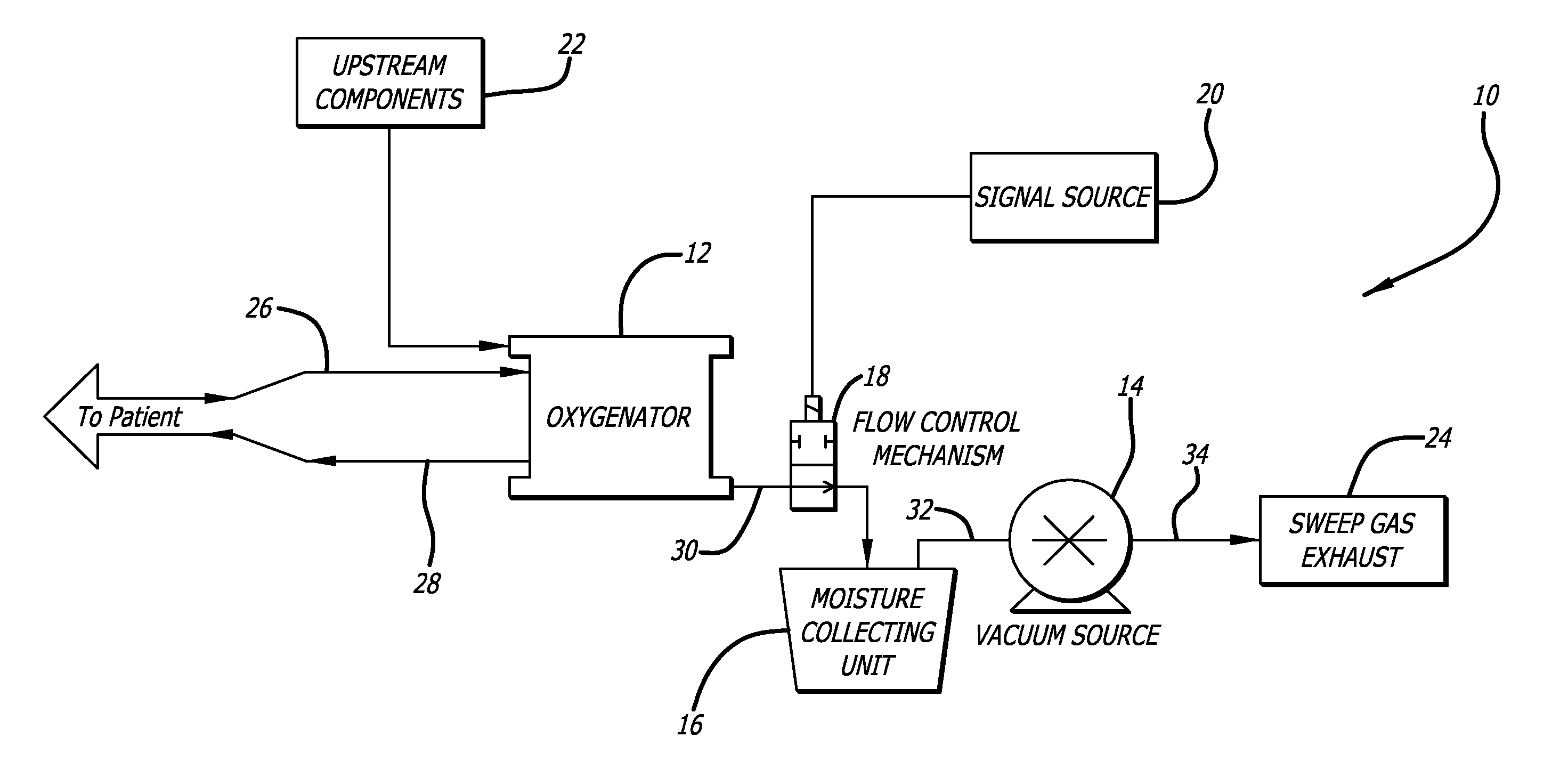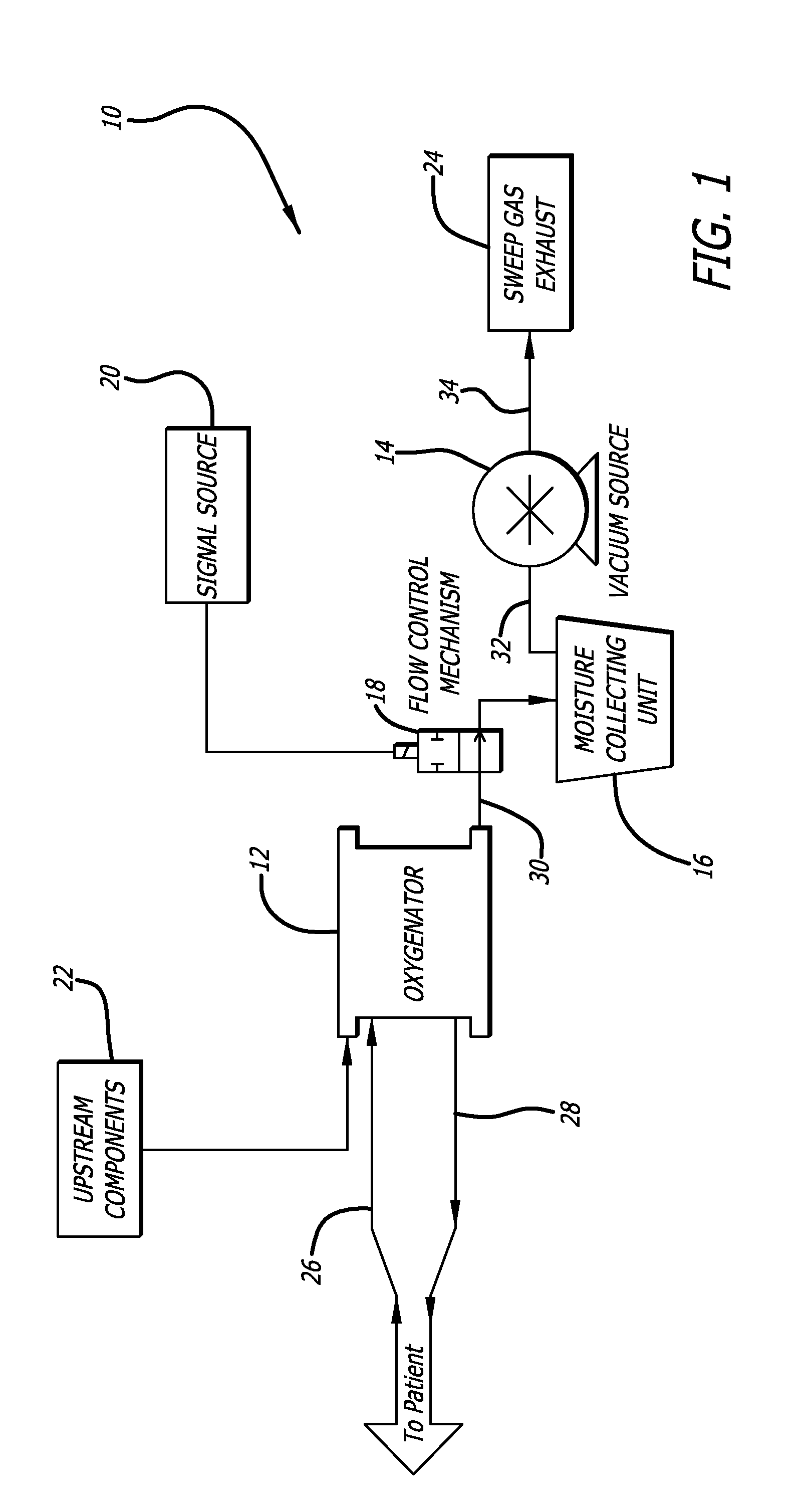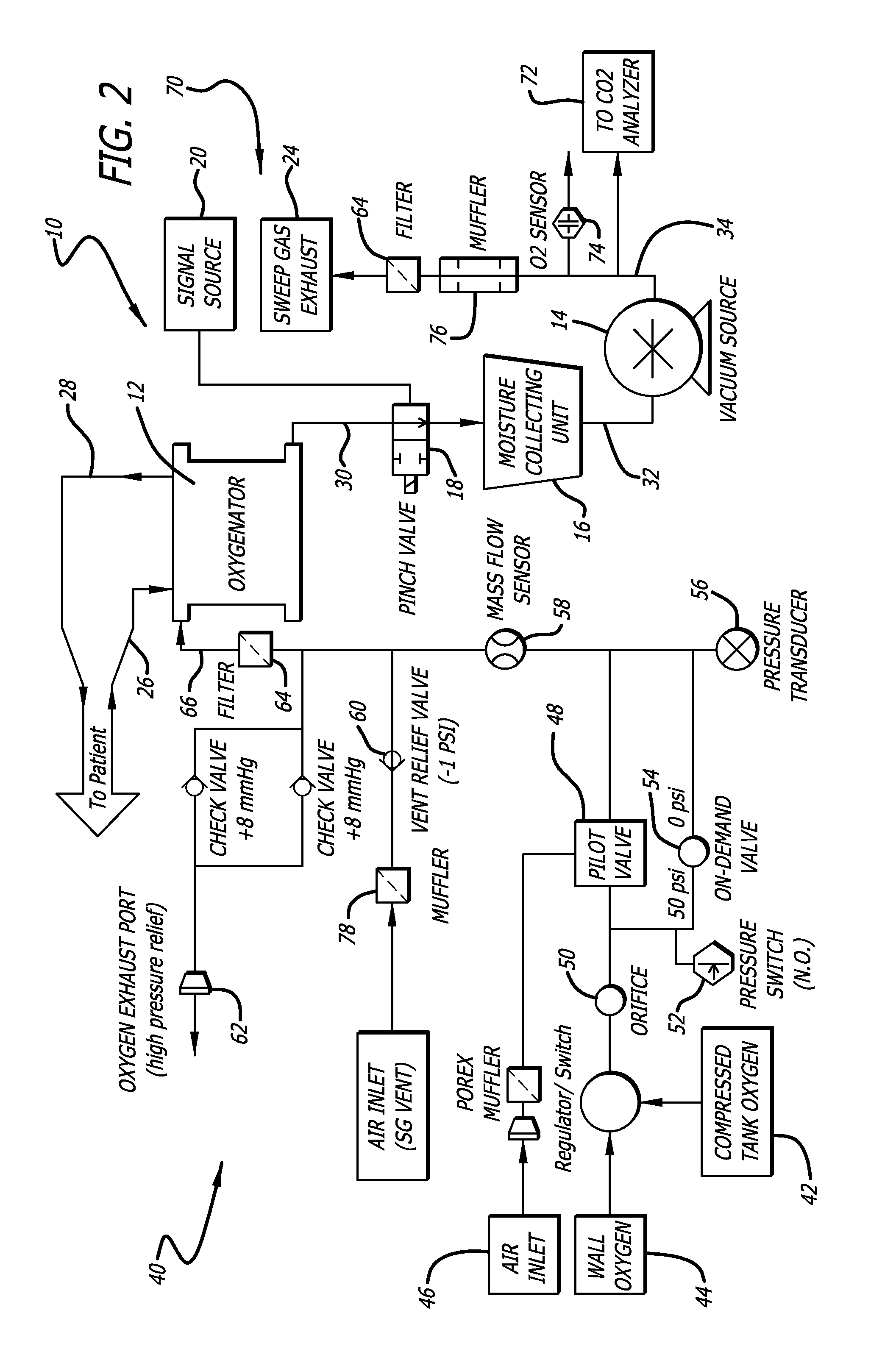Method and system for purging moisture from an oxygenator
a technology of oxygenator and moisture, applied in the field of extracorporeal systems, can solve the problems of high negative pressure in the moisture collecting unit itself, and achieve the effect of improving the gas exchange properties
- Summary
- Abstract
- Description
- Claims
- Application Information
AI Technical Summary
Benefits of technology
Problems solved by technology
Method used
Image
Examples
Embodiment Construction
[0018]Referring now to FIG. 1, a block diagram depicting the moisture purging system 10 is shown. The moisture purging system 10 is utilized to remove accumulated moisture from an oxygenator 12 which utilizes hollow fiber membranes for removing carbon dioxide and / or adding oxygen to a patient's blood via extracorporeal circulation. The moisture purging system 10 includes a vacuum source 14, shown in FIG. 1 as a vacuum pump, which is in communication with the sweep gas exit port of the oxygenator. The moisture purging system 10 further includes a moisture collecting unit 16 which, in FIG. 1, is shown as a moisture canister or water trap which is a well known device utilized in medical and other systems for collecting unwanted moisture from a system. Lastly, the moisture purging system 10 includes a flow control mechanism 18 shown as a pinch valve in FIG. 1. It would be appreciated by those skilled in the art that this flow control mechanism can be any one of a number of different mec...
PUM
 Login to View More
Login to View More Abstract
Description
Claims
Application Information
 Login to View More
Login to View More - R&D
- Intellectual Property
- Life Sciences
- Materials
- Tech Scout
- Unparalleled Data Quality
- Higher Quality Content
- 60% Fewer Hallucinations
Browse by: Latest US Patents, China's latest patents, Technical Efficacy Thesaurus, Application Domain, Technology Topic, Popular Technical Reports.
© 2025 PatSnap. All rights reserved.Legal|Privacy policy|Modern Slavery Act Transparency Statement|Sitemap|About US| Contact US: help@patsnap.com



